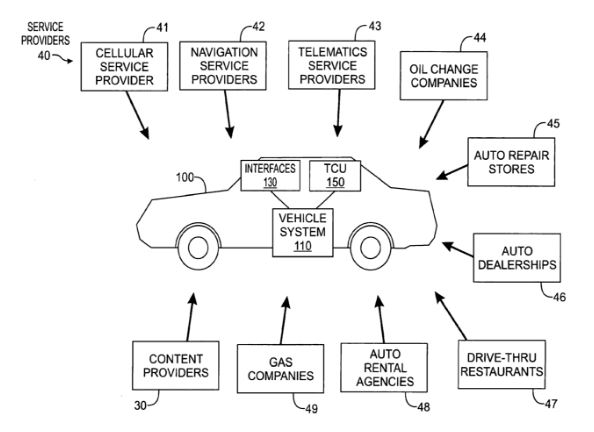
“I’m a software guy, not a car guy,” proclaims John Ellis, author of The Zero Dollar Car. Ellis began his tech career at Motorola then moved on to Ford and connected cars where he says they were looking at 2020 model year cars having 100 million lines of code. IHS Markit estimated the data associated with 152 million cars on the road running all this code would be valued at $12.5 billion by 2020. To put this into perspective, BIA/Kelsey estimates that the entire local radio industry with much of its listening coming from cars, generates $15.6 billion in advertising. And that’s just a drop in the bucket, as McKinsey estimates that number may rise to $1.5 trillion globally by 2030, “driven by shared mobility, connectivity services, and feature upgrades.”
Taking all this in, the premise of Ellis’ book, just out this week, is when doing the math, it’ll be economically viable for a consumer to drive off the lot for no out of pocket charge a brand new $40,000 vehicle. They’ll “pay” instead with their personal data that will be monetized by dozens of business models. Just as Google, Facebook, local broadcasters, and others in the advertising business can deliver search, navigation, content and other products and services for free that are highly valued by consumers, why not cars Ellis argues.
U.S. consumers already get things like all the free over-the-air movies, news, sports, series and other programming they want for free from local radio and TV stations. Local broadcasters can afford to do so because they generate over $35 billion in advertising revenues selling access to these audiences, according to BIA/Kelsey.
There will be a lot of data coming from cars to be monetized. Hitachi estimates that a typical car’s 40 sensors will send 25 Gbytes of data to the cloud every hour. Much of the data value comes from passive sensors collecting data about weather, road, car diagnostic, and other technical data. But new systems in connected and autonomous car will bring more advertising, entertainment, and information services to the car.
To see what this looks like in practice, consider the diagram below from a 2016 Google patent it obtained from Motorola Mobility. Cellular, navigation, telematics, oil change, auto repair and dealerships, content companies, auto rental companies and restaurants all have viable business models that rely in part on automotive data. Google’s Waymo self-driving car project will certainly be a data-centric enterprise.
Radio broadcasters figured out how to monetize cars by providing free, ad-supported programming to drivers and passengers. The next generation of consumer oriented information and entertainment services in connected cars increasingly will be ported not through AM/FM/HD radio receivers but instead, the car’s head unit (for more information on “head units” see for example this article). Start-up firms like DriveTimeMetrics see a major upside for data that can be monetized from head units. The company notes that, “Our analytics are utilized by audio providers, advertisers, ad agencies, music labels and consulting firms, and also by our automotive partners themselves.”
Ellis sounds a cautionary note about privacy, appropriate use and control over personal, and car data. Driving a car is becoming an increasingly crowded space, even when driving alone. You might start getting that NASCAR feeling of sponsors sitting next to you with their virtual logos all over your car as you drive that new vehicle off the lot.
Perhaps a fair price to pay for a “zero dollar car.” But consumers can have a voice in the data they produce and what happens to it. For example, to see how much your data is worth, and get some control over its use, you can check out sites like Bid/r, or CitizenMe.
Ellis ends his book with two important thoughts. First, “companies need to transition from a ship-and-forget product culture to a ship-and-remember culture.” Here he cites Tesla as an exemplar. In the “Car as a Service” connected car world, features can be turned on and off with software switches. During Hurricane Irma’s fallout in Texas, Tesla decided to provide a free firmware upgrade to its owners to extend vehicle battery life to assist people challenged to find working charging stations. Ellis firmly believes, “Every company that has sensors in its products, is by default, a software company.” And finally, Ellis argues that, “Society needs to redefine the concept of ownership.” As he says, the question of who owns data is both critical and unresolved at the moment.


This Post Has 0 Comments